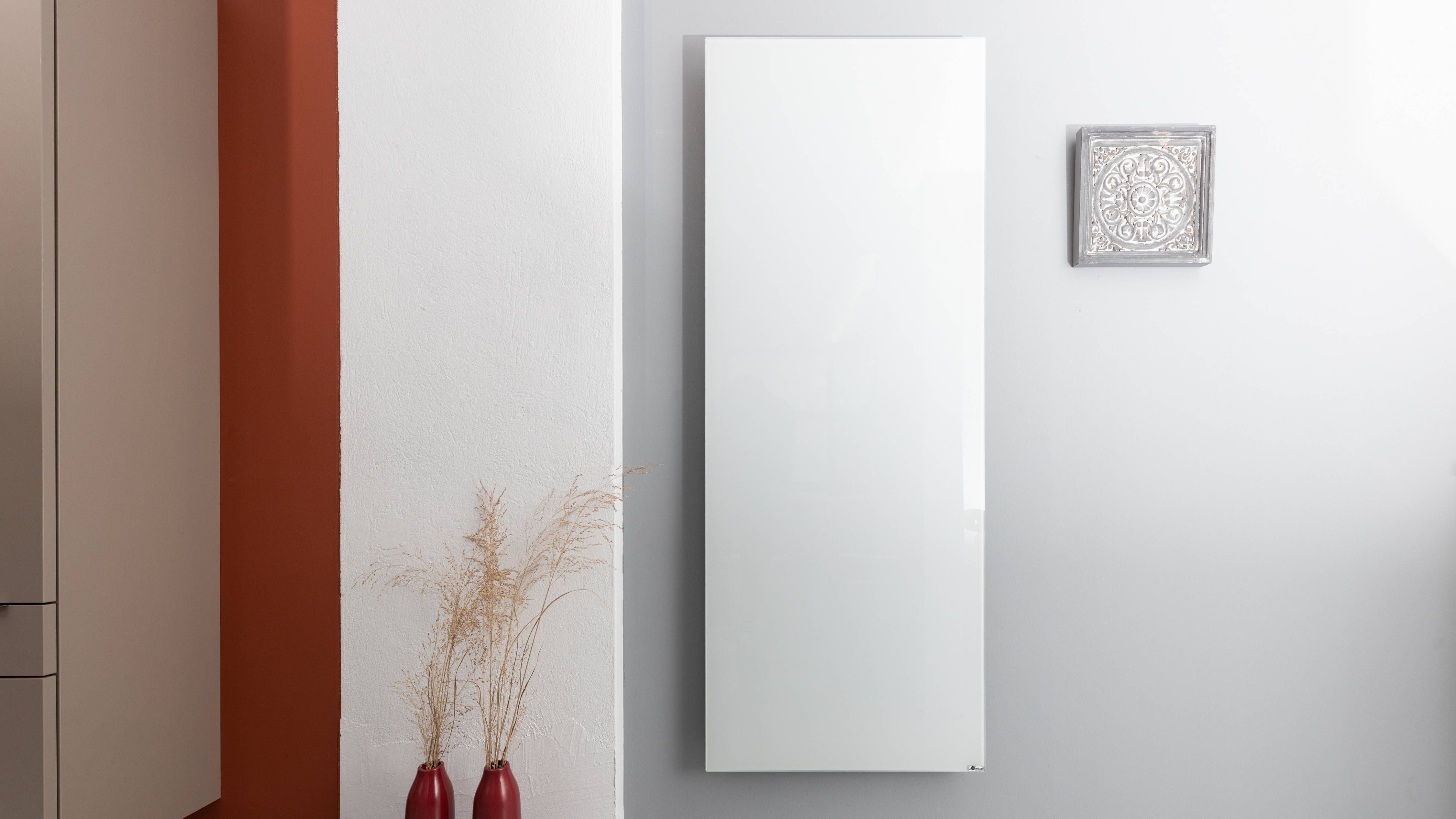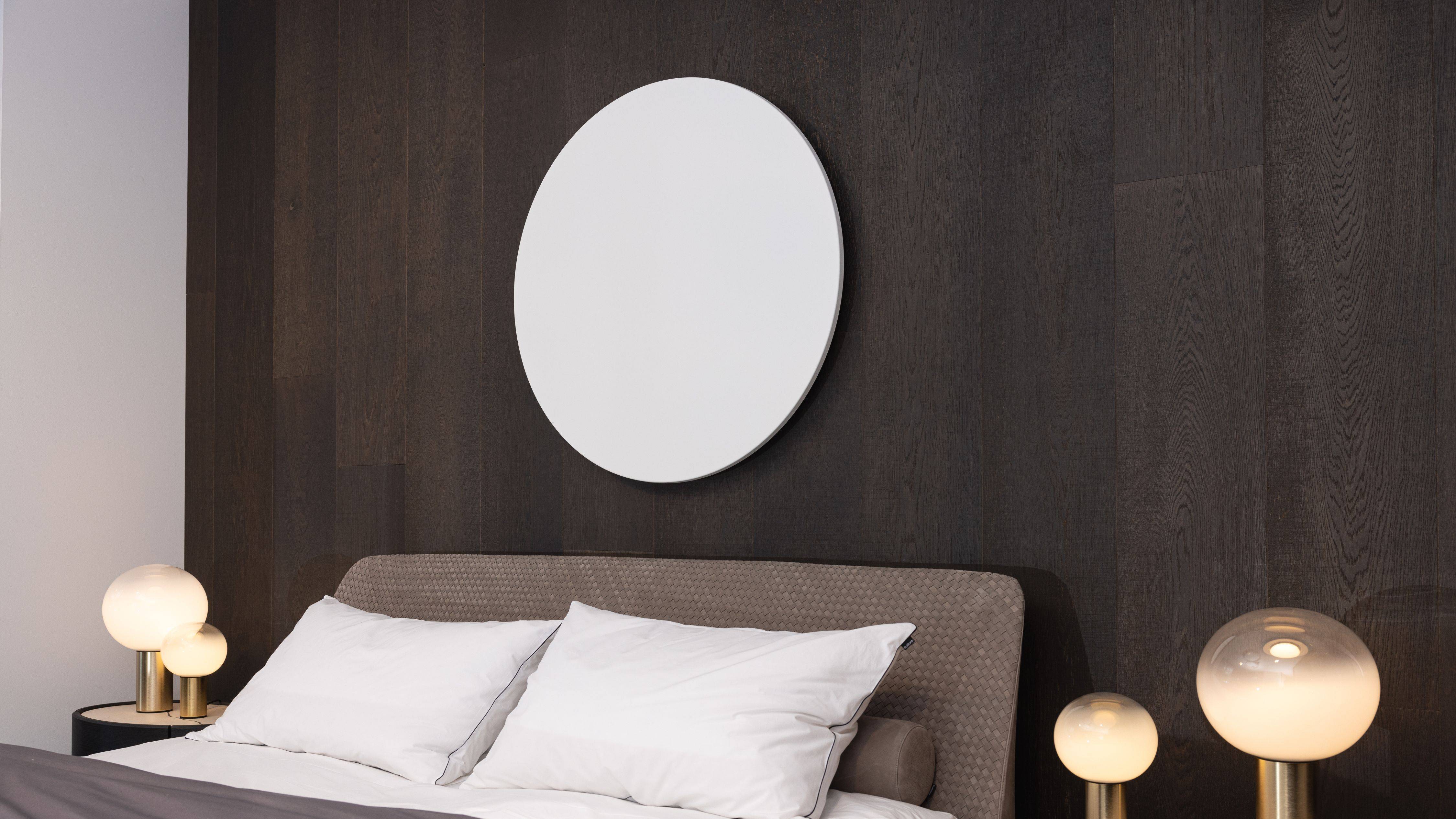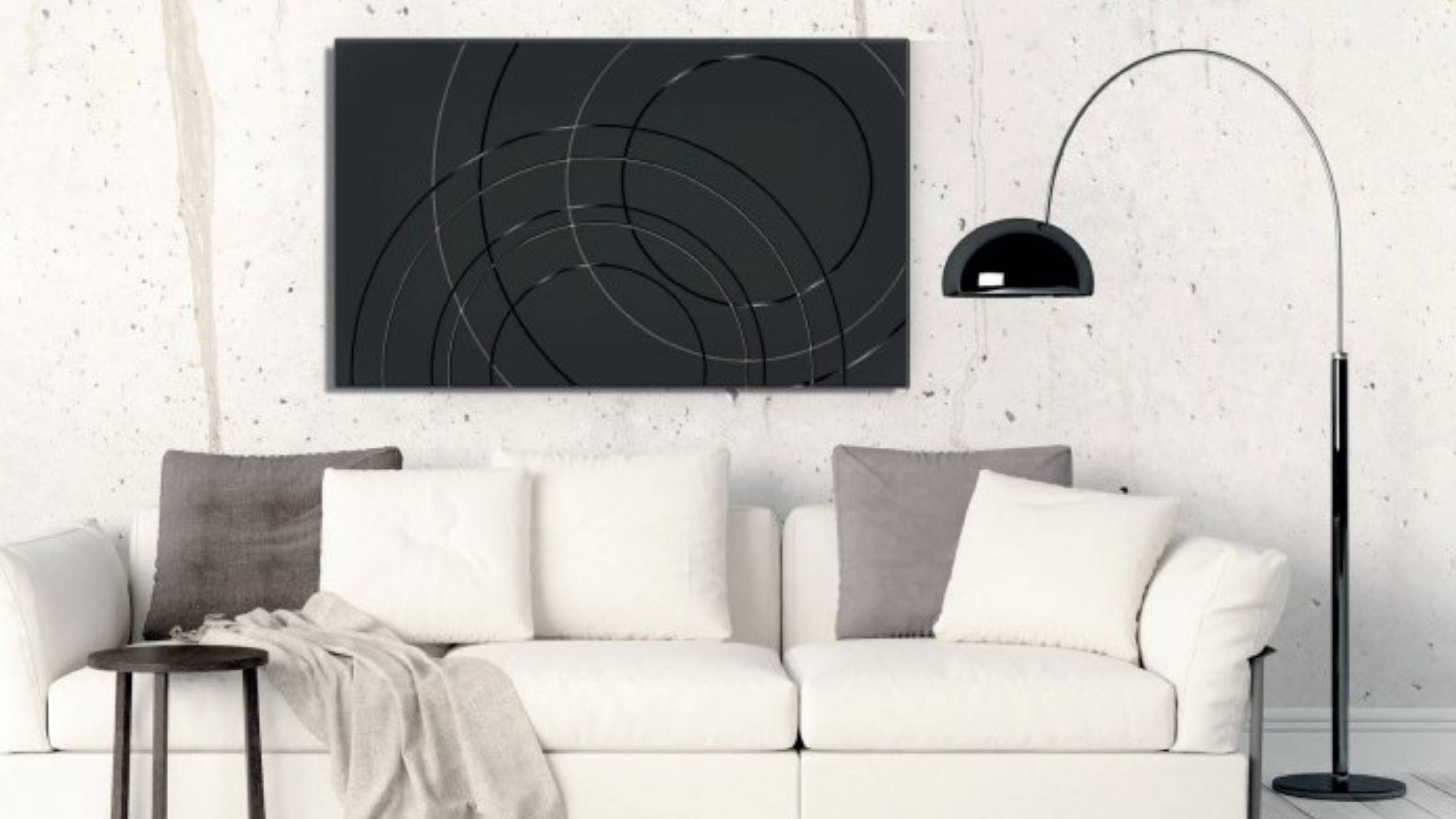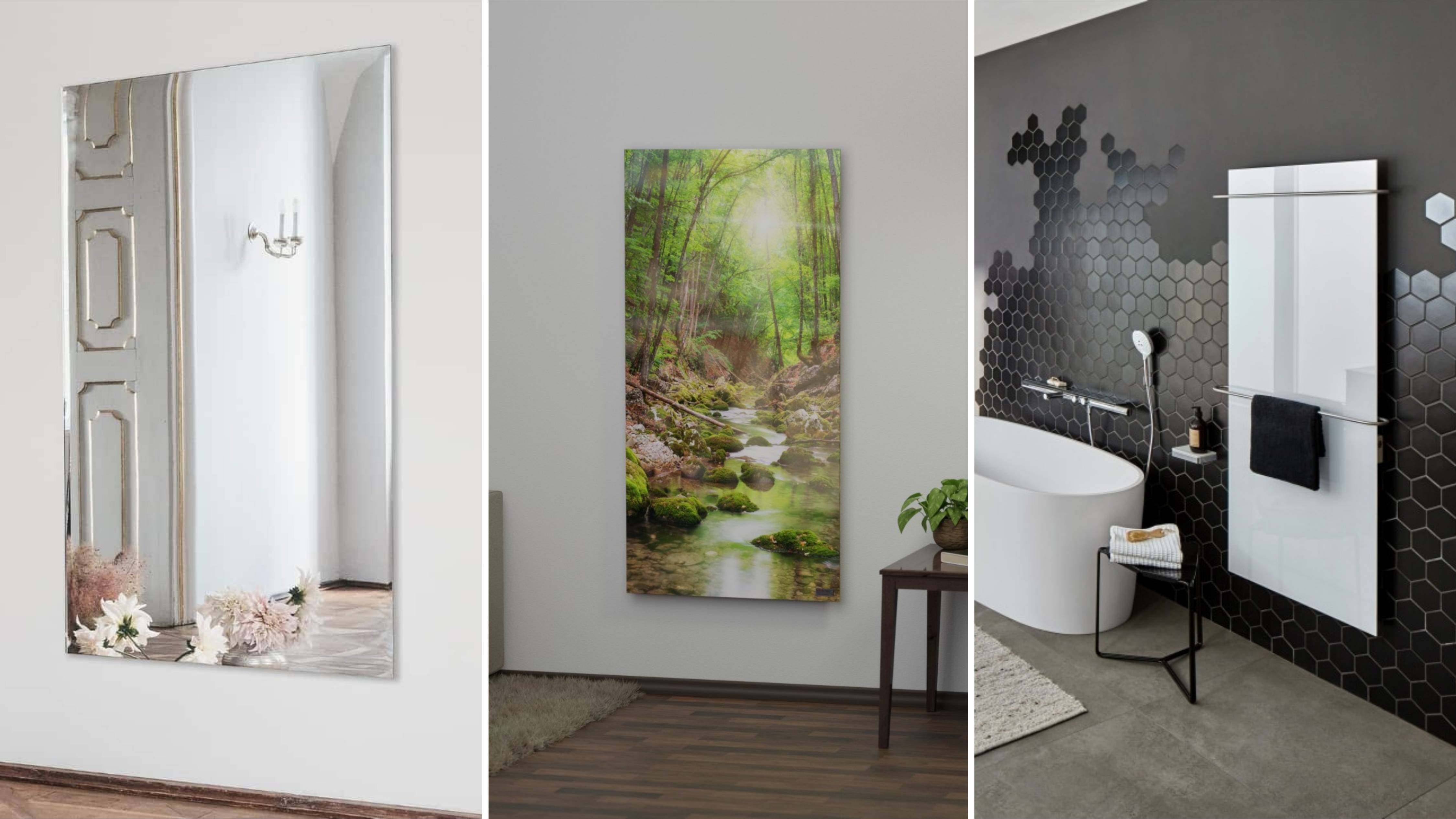


Wall infrared heating for your home
Heating with infrared is becoming increasingly popular - and for good reasons. Unlike conventional radiators, infrared radiators provide cosy warmth in your home in a very short time. The purchase costs are also significantly lower than for conventional heating systems. In addition, wall infrared heaters can be integrated into the room in a particularly space-saving way and can also be used decoratively. Quick and efficient heating - no problem with wall infrared heaters!
Overview
- How does an infrared heater for wall mounting work?
- Enjoy healthy warmth
- How can infrared wall panel heaters be installed?
- Convenient operation via thermostat
- Wall Infrared Heating & Power Consumption
- What are the different versions?
- Infrared wall heating for the bathroom
- Wall infrared heater for the changing table
- Infrared wall heating for all rooms
- Advantages of a wall infrared heater at a glance
How does an infrared heater for wall mounting work?
Unlike conventional heating systems, infrared heaters are not operated with oil or gas, but electrically. The electromagnetic infrared rays heat solid bodies instead of the room air. These include the ceiling, the walls and the floor as well as the human body. These absorb the heat, store it and gradually release it into the room. This radiant heat causes the room to heat up much faster than is the case with oil or gas heating systems. The heating of the ceiling and walls also prevents damp spots from forming, which in turn prevents the formation of mould.

Enjoy healthy warmth
Many people find infrared heat pleasant and beneficial. It can best be compared to the warmth of the sun's rays or a tiled stove. The heat is noticeable much faster because it penetrates directly into the body instead of warming it from the outside. Long-wave infrared radiation heats all surfaces and objects in the room - but not the room air. In this way, there is no circulation of air, as is the case with convection heating. Dust and hair are thus not stirred up, which is a great advantage especially for asthma patients and allergy sufferers. Since the air hardly moves, the humidity is also constant. Dry heating air, which leads to dry mucous membranes, is this a thing of the past.
How can infrared wall panel heaters be installed?
Infrared heating is much easier to install than oil- or gas-fired radiators. Whereas a conventional central heating radiator requires pipes to be laid, an infrared wall heating only needs a power connection. If there is a socket near your new infrared wall heating, you can install it quickly and easily yourself. Another advantage over other heating systems is the longevity of electrically operated infrared heaters. They usually do not require any maintenance, so there are no additional costs for this.
Convenient operation via thermostat
With the help of a thermostat, you can control your infrared wall heaters easily and reliably. For this purpose, the thermostat measures the room temperature and compares it with the set value you have selected. If the preset temperature deviates from the ambient temperature, the thermostat automatically switches the infrared heating on or off. Many modern thermostats can be integrated into smart home concepts. This gives you the option of setting the desired temperature from anywhere and programming fixed times. It is important that you position the thermostat correctly in the room, as this is where it measures the temperature. Therefore, do not place the thermostat too close to the infrared heating or near the window.

Wall Infrared Heating & Power Consumption
How high the operating costs are for an infrared wall heating system depends on various factors. You are independent of oil and gas prices, but not of the price of electricity.
The wattage of your selected model is therefore of great importance in order to estimate the running costs of the infrared heating. The required output of the infrared heating is based on various factors. In addition to the number of square metres to be heated, the number of exterior walls plays a central role. The more living space and external walls, the higher the wattage. While an infrared wall heater with 300 watts is sufficient for small rooms, you may need 800, 1000 or 2000 watt radiators for larger rooms.
The insulation of your house, the location of the infrared heater and the condition of your windows and walls also play an important role in estimating the costs. It is clear that well-insulated houses require less infrared heat and store it for longer. So check these various factors before you decide to buy one or more infrared wall heaters.

What are the different versions?
Infrared heaters for the wall are available in many different designs. Whether as a classic, plain wall heater, as a decorative picture heater or as a practical mirror heater - you are spoilt for choice. Thanks to the large selection of wall infrared heaters, the heaters can be perfectly matched to your individual living style. With picture heaters, you even have the option of selecting your own motifs such as photos.

Infrared wall heating for the bathroom
Imagine it's cold outside and you're relaxing in the hot bath. How about having a pre-warmed towel waiting for you afterwards? An infrared towel warmer makes it possible! On the one hand, it keeps dry and warm towels ready for you at all times. On the other hand, it also ensures a pleasant temperature in the bathroom. Another practical solution for the bathroom is an infrared mirror heater. It can be placed above the washbasin to save space and radiates pleasant infrared heat from there.
Wall infrared heater for the changing table
Babies cool down quickly, especially when changing nappies or getting dressed. To prevent your baby from freezing at the changing table, we recommend a wall-mounted infrared heater for this area as well. Mild infrared rays gently warm the baby's sensitive skin. A space-saving wall infrared heater can be easily installed near the changing table, provided there is a power connection nearby. This way you can change or dress your baby at any time in pleasant temperatures.

Infrared wall heating for all rooms
Infrared wall heaters can be used universally throughout the house. If you have rooms that you rarely use, an infrared heater will provide a pleasant temperature in no time. In this way, you can efficiently and quickly transform your guest room, the party room in the basement or the garage into a well-tempered room. With an infrared heater for the wall, you can experience soothing and healthy infrared heat in your home.
Advantages of wall-mounted infrared heating at a glance
- Lower initial costs compared to classic heating systems
- Fast & efficient heating
- Prevents mould formation
- Allergy friendly thanks to low dust turbulence
- Quick & easy installation
- No maintenance costs
- Infrared wall heaters in many different designs
- Universally applicable in the house
- 10 years warranty on wall infrared heaters from Redwell








